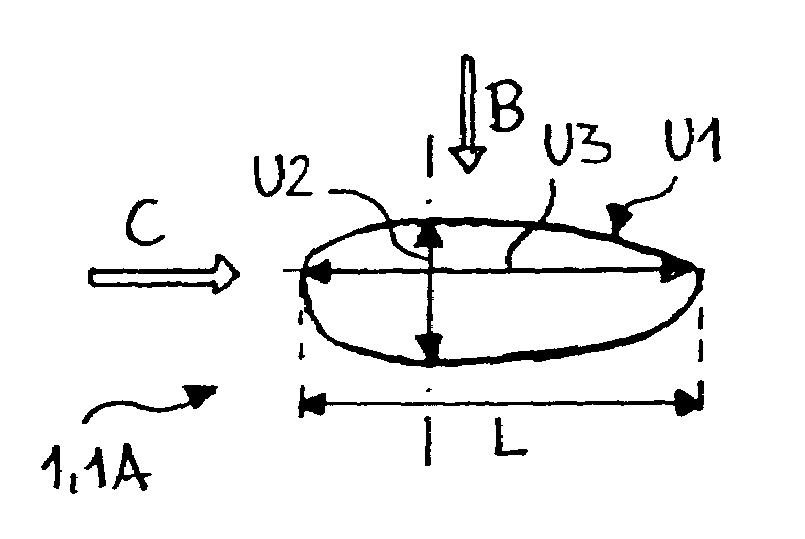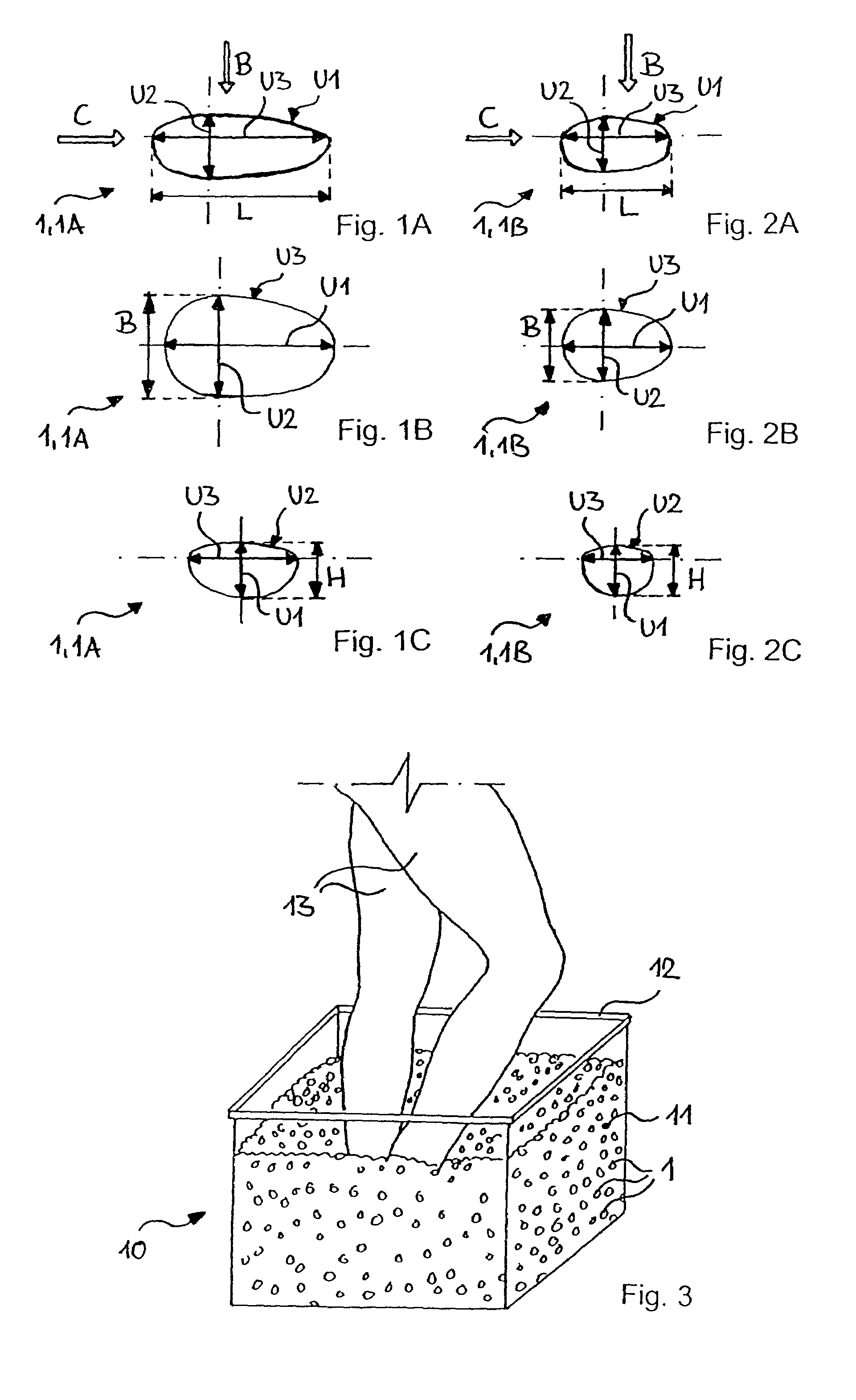Device for carrying out an active motion therapy method and shaped body of such a device
a technology of active motion therapy and shaped body, which is applied in the field of plastic shaped bodies, can solve the problems of disadvantageous damage to natural shaped bodies and hygienic problems of natural shaped bodies, and achieve the effect of facilitating recycling and being more ecological
- Summary
- Abstract
- Description
- Claims
- Application Information
AI Technical Summary
Benefits of technology
Problems solved by technology
Method used
Image
Examples
Embodiment Construction
[0037]FIG. 1 shows a plastic shaped body 1A for carrying out a method of active motion therapy. FIG. 1A shows a side view of the shaped body 1A. The same shaped body 1A is shown in FIG. 1B in top view (in the direction of arrow B of FIG. 1A) and in FIG. 1C in front view (in the direction of arrow C of FIG. 1A). As seen in FIGS. 1A through 1C, the shaped body 1A has rounded outer contours which are exclusively convex curved about its entire surface.
[0038]As can preferably be seen in FIG. 1C, the shaped body 1A is symmetrical relative to a first plane defined by a first substantially oval outer periphery U1 of the shaped body 1A, i.e. this plane divides the shaped body 1A into two mirror-symmetrical halves.
[0039]The shaped body 1A is asymmetrical relative to a second plane defined by a second substantially oval outer periphery U2 of the shaped body 1A which is perpendicular to the symmetry plane of the shaped body 1A defined by the outer periphery U1, wherein this plane is the plane d...
PUM
 Login to View More
Login to View More Abstract
Description
Claims
Application Information
 Login to View More
Login to View More - R&D
- Intellectual Property
- Life Sciences
- Materials
- Tech Scout
- Unparalleled Data Quality
- Higher Quality Content
- 60% Fewer Hallucinations
Browse by: Latest US Patents, China's latest patents, Technical Efficacy Thesaurus, Application Domain, Technology Topic, Popular Technical Reports.
© 2025 PatSnap. All rights reserved.Legal|Privacy policy|Modern Slavery Act Transparency Statement|Sitemap|About US| Contact US: help@patsnap.com


